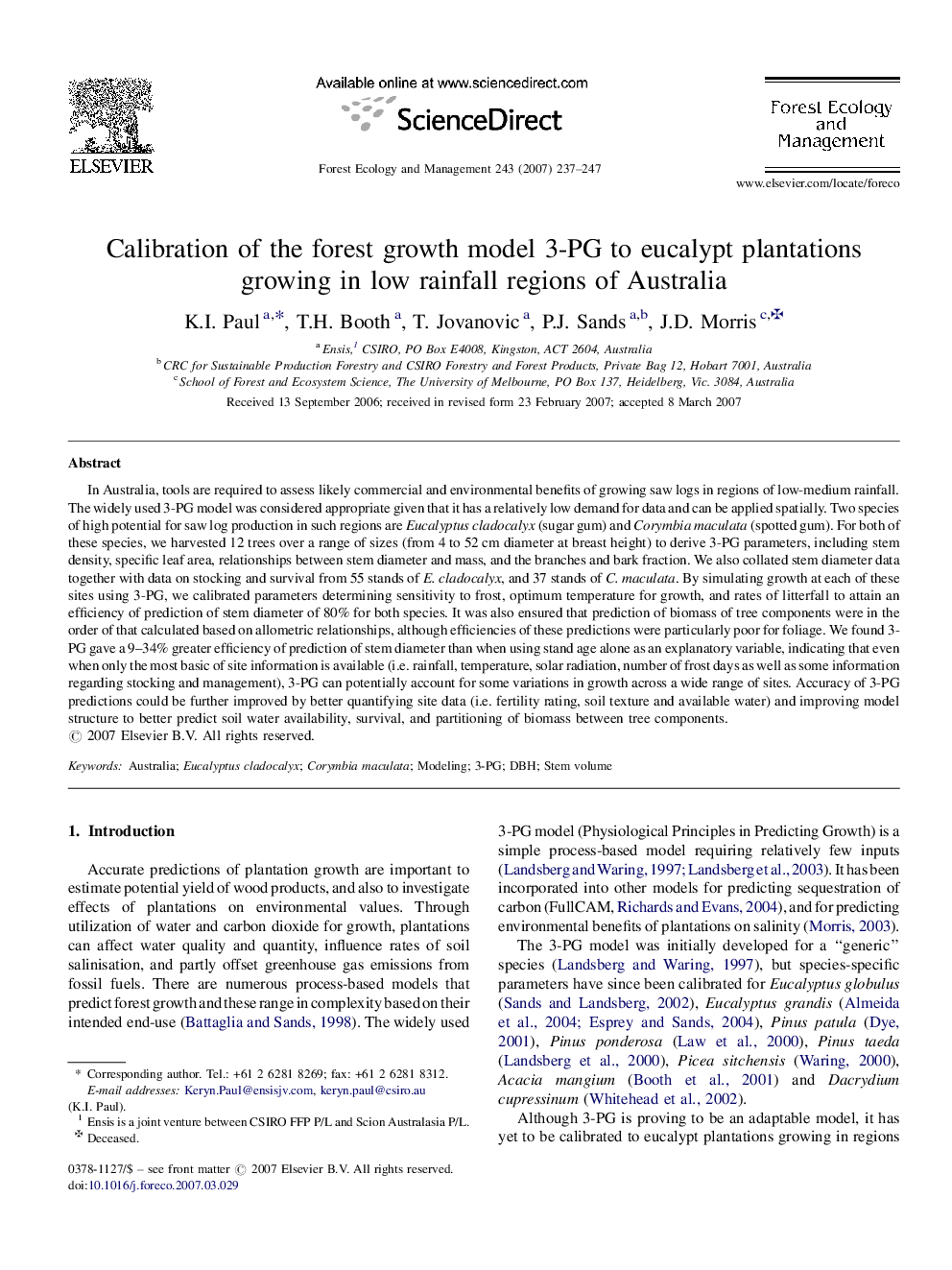| کد مقاله | کد نشریه | سال انتشار | مقاله انگلیسی | نسخه تمام متن |
|---|---|---|---|---|
| 90546 | 159387 | 2007 | 11 صفحه PDF | دانلود رایگان |

In Australia, tools are required to assess likely commercial and environmental benefits of growing saw logs in regions of low-medium rainfall. The widely used 3-PG model was considered appropriate given that it has a relatively low demand for data and can be applied spatially. Two species of high potential for saw log production in such regions are Eucalyptus cladocalyx (sugar gum) and Corymbia maculata (spotted gum). For both of these species, we harvested 12 trees over a range of sizes (from 4 to 52 cm diameter at breast height) to derive 3-PG parameters, including stem density, specific leaf area, relationships between stem diameter and mass, and the branches and bark fraction. We also collated stem diameter data together with data on stocking and survival from 55 stands of E. cladocalyx, and 37 stands of C. maculata. By simulating growth at each of these sites using 3-PG, we calibrated parameters determining sensitivity to frost, optimum temperature for growth, and rates of litterfall to attain an efficiency of prediction of stem diameter of 80% for both species. It was also ensured that prediction of biomass of tree components were in the order of that calculated based on allometric relationships, although efficiencies of these predictions were particularly poor for foliage. We found 3-PG gave a 9–34% greater efficiency of prediction of stem diameter than when using stand age alone as an explanatory variable, indicating that even when only the most basic of site information is available (i.e. rainfall, temperature, solar radiation, number of frost days as well as some information regarding stocking and management), 3-PG can potentially account for some variations in growth across a wide range of sites. Accuracy of 3-PG predictions could be further improved by better quantifying site data (i.e. fertility rating, soil texture and available water) and improving model structure to better predict soil water availability, survival, and partitioning of biomass between tree components.
Journal: Forest Ecology and Management - Volume 243, Issues 2–3, 31 May 2007, Pages 237–247